Generally, sneakers run bigger than dress shoes because they often have padding or thicker collars. Dress shoes are more close-fitting. You may need to size up anywhere from half a size to over an entire size when going from dress shoes to sneakers.
Wouldn’t shoe shopping be easier if there was some universal sizing rule that all shoemakers had to abide by?
Personally, I don’t love that the number I have in my head as being “my shoe size” is actually quite unreliable.
Here’s the thing, though. It’s physically impossible to create a universal sizing standard, especially if the goal is consistency between sneaker sizes and dress shoe sizes.
They’re inherently different on so many levels.
So, how do you figure out the differences between the two? It’s honestly not that hard, but you need to know a few key pieces of information.
Let’s get to it.
Table of Contents
Dress Shoe Size vs Sneaker Size: 2 Key Things to Consider
1. Sneakers Tend to Run Bigger Than Dress Shoes

Sneakers have a naturally more spacious fit compared to dress shoes. This is because of what goes into building them, so there’s no easy way to get around the general sizing difference between the two shoe styles.
Think about all of the padding that goes into athletic shoes, compared to dress shoes, which may have nothing more than a leather lining.
So if a men’s size 10, regular, fits you perfectly when it comes to a pair of leather oxford shoes, that very same size might feel snug on you when it comes to most sneaker models. Often, you’ll need to size up anywhere from half a size to even an entire size and a half. You might need a 10.5 or even an 11.5 in this hypothetical example.
This is because some sneakers are more padded than others. A running shoe, for example, will have a lot more strategic layers trying to balance cushioning and support above and beneath your foot.
A canvas skate shoe or court shoe won’t have nearly as much padding. A Converse Chuck Taylor, for example, only runs half a size large.
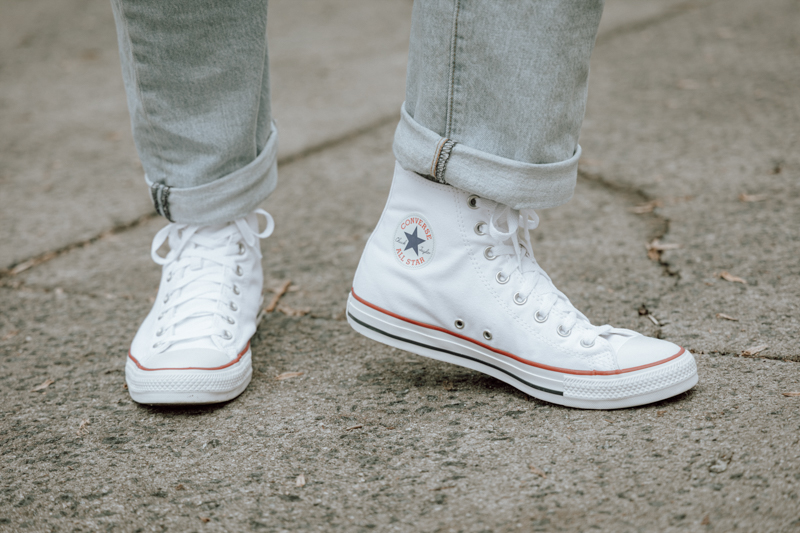
This can even be the case with a lot of non-athletic sneakers. Think about a pair of low-profile leather sneakers like a Common Projects Achilles. These are definitely more likely to fit true to size compared to other sneakers.
However, they still have broader laces, a roomier lacing system in general, and a thicker collar and lip. So, some people will find that sizing up provides a more comfortable fit. Those in between sizes should definitely size up.
The Common Projects 'Original Achilles' sneakers have gained cult status thanks to their minimalist design and superior construction. This white version is perfect for creating crisp city-smart looks.
What’s more, sneakers can often be worn with thicker socks. No one is trying to pair their shell cordovan opera pumps with ribbed tube socks.
Dress shoes also rely on far more sophisticated and varied lasts, or shoe molds. Sneaker lasts are used to create the shoe’s structure, but that’s it. Part of this is because the padding would render a more nuanced structure pretty useless, and part of this has to do with the fact sneakers just aren’t meant to be as close-fitting as dress shoes.
Appropriately, dress shoes are like the tailored suits of the footwear world.
2. Dress Shoes Are Meant to Be Close-fitting
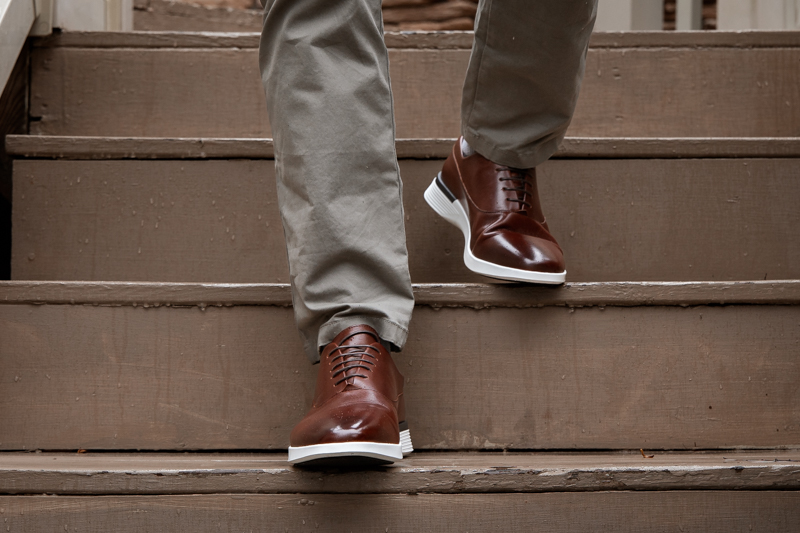
Since dress shoes should fit in a more tailored way, there are many more components you need to consider. This means looking not only at the length of your foot, but also the width and even the height—if you have a high instep, you don’t want a dress shoe with a low silhouette.
With sneakers, this 3D approach to sizing isn’t as important, again, because of the extra room and padding.
So, here are three important measurements to ensure you have the right dress shoe fit.
The most important aspect is how everything fits in the shoe box. The shoe box is the widest part of the shoe, and this is where the ball of your foot should align. This area should be close to your foot all around, but it shouldn’t be suffocatingly tight.
Next, where do your toes land? This is going to vary depending on different styles. Of course, there’s going to be more room in a round toe than a pointed one. However, just ensure your toes don’t touch the end of the shoe.
And finally, you don’t want any heel slippage. What I mean by this is your heel shouldn’t be sliding up anywhere close to the collar when you walk around. There will be more sliding with loafers, but if your heel comes up entirely in any scenario, you need a smaller size.
With the upper of an Oxford dress shoe and the sole of a golf shoe, the Wolf & Shepherd isn’t like any other sneaker I’ve seen. It’s easily the most comfortable Oxford I’ve ever worn, but it’s not cut out for any formal or even semi-formal occasion---this is a nice sneaker, but it’s as casual as they come.
How to Find Your True Dress Shoe Size
You’ll need to use a Brannock device to find your exact dress shoe size. If you don’t have one, no worries. Every shoe store will likely have several.
The Brannock will provide three essential measurements: Your foot’s length, arch, and width.
Place your foot in the Brannock, with the heel flush against the back of the device. See what number your longest toe is at. That’s your length measurement.
Next, slide the device pointer to the ball of your foot. This will reveal your arch measurement.
Whichever of the two measurements is the largest is your Brannock shoe size. So if your heel-to-toe is 10, but your arch is 10.5, then you’ll size it based on your arch.
Finally, using the width bar, which you’ll slide to the side of your foot, you’ll find out how wide your shoe needs to be. The bar will indicate one of seven letters.
If the corresponding letter is A, B, or C, you’ll need a narrow shoe. If it’s a D, you’ll need an average. If it’s E, EE, or EEE, you’ll need a wide.
How to Find Your True Sneaker Size
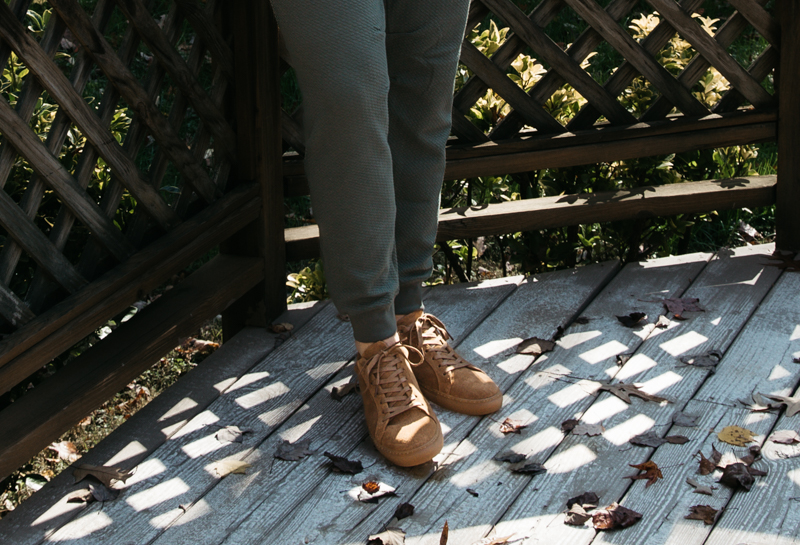
So now you know your sneaker size will likely be bigger than your dress shoe size. But how much bigger?
Again, this is going to depend on the sneaker in question.
However, here are some tips to help you decide if the sneaker you’re trying on is right for you.
Similar to finding your dress shoe fit, you want to see where your toes land. Nothing should be pushing into your toenails, whether that’s padding from above, to the sides, and certainly not the edge of the toe box.
Also, the footbed needs to be between half an inch to about .065 inches longer than your foot. Any more than that, and you’ll be sliding back and forth in your shoe. Any less than that, and you might come out with blisters.
Make sure you’re doing these measurements while wearing the socks you intend to use with this shoe. Even with the sock, you should be able to wiggle your toes a bit.
As with a dress shoe, your heel shouldn’t be sliding up and down. That’s a tell-tale sign the shoe is too big. Your heel should stay put beneath the collar and be cupped comfortably around and below it.
And, of course, make sure to take into account any insoles you might be using.
The Perfect Fit
Implementing this information can be confusing at first, but just start with your dress shoe size.
Use your Brannock number and width as your base. Then, just ensure everything aligns properly when trying on dress shoes. Remember, look at the shoe box, where your toes hit, and if there’s heel slippage.
Sneakers will almost always be bigger than dress shoes. If you’re a size 10 in dress shoes, you might be a 10.5 in canvas sneakers or casual low-profile leathers. The more padding there is, the higher you’ll size up.
It’s important to get the perfect fit with both sneakers and dress shoes. If you’re running around in the wrong shoe size, this can cause blisters and even back problems. No one wants that.
FAQs
How should dress shoes fit?
You’ll often use your regular shoe size when choosing a dress shoe. Ensure the toes don’t touch the edge, that there’s no heel slippage, and that the ball of your foot sits in the shoe box, which should fit closely but not tightly around your foot.
Do dress shoes fit differently than regular shoes?
Yes, dress shoes fit differently than ‘regular’ shoes. Dress shoes are more close-fitting than sneakers and usually need more breaking in.
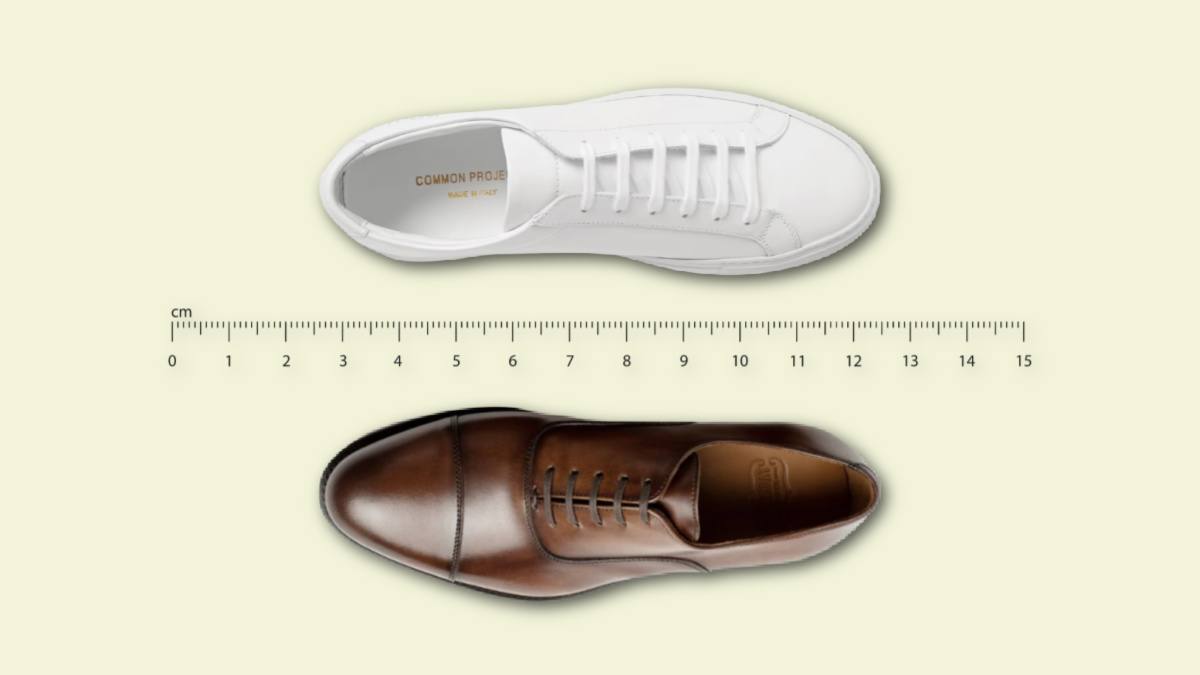
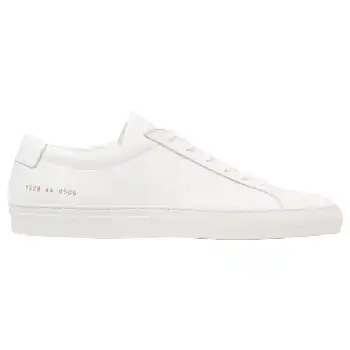
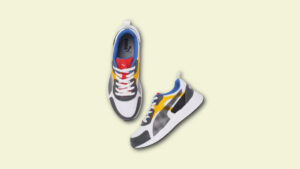
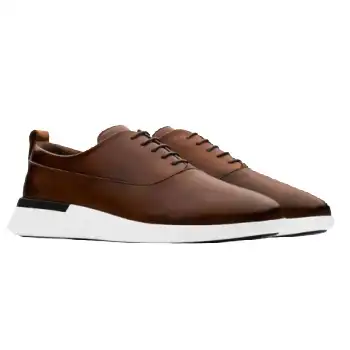
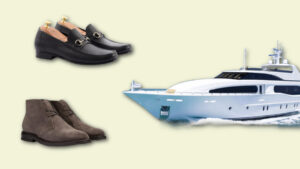
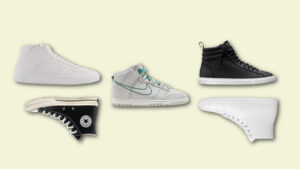

Join the Discussion